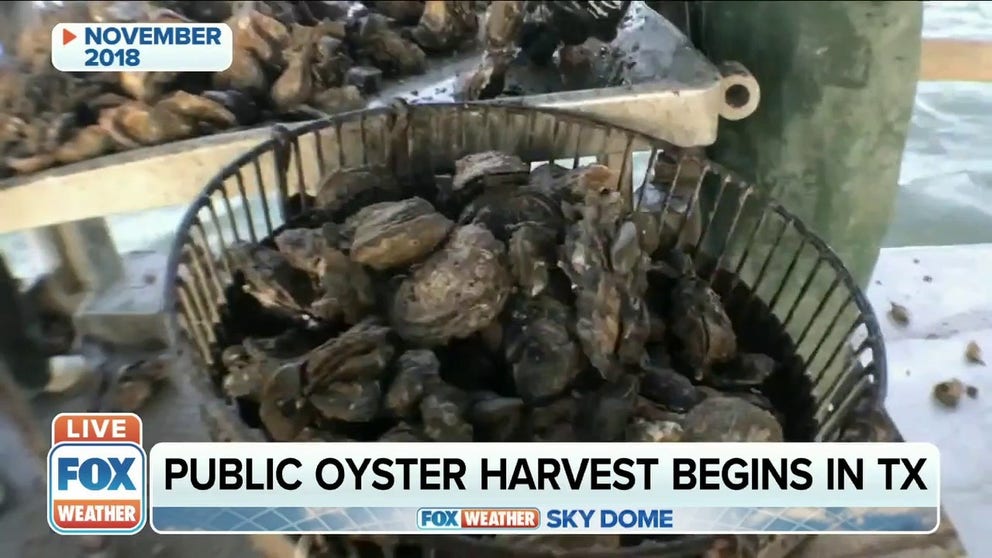Texas oyster season sees challenges due to storm surges, rainfall
The six-month harvesting season in public waters for the state's $3 billion oyster industry began Nov. 1, but it is starting with some challenges
Public oyster harvest begins in Texas
This is a big day for the state's $3 billion oyster industry. The 6-month season for harvesting public waters began Nov. 1. However, the season is starting with some challenges.
SAN LEON, Texas – The opening of oyster season in Texas is starting with a challenge as fishers begin harvesting oysters in public waters.
Emma Clarkson is the habitat assessment team lead for the Coastal Fisheries Division of Texas Parks and Wildlife. She said several challenges this year include habitat degradation and loss resulting from anthropogenic and natural stressors.
"Regarding weather, sedimentation associated with hurricane storm surges and rainfall can bury and kill oysters, and prolonged periods of rainfall can decrease salinity and lead to oyster mortality," Clarkson said.
Harvesting for the $3 billion industry began on Nov. 1 and will continue until April 30. During open season, oysters are collected weekdays from sunrise to 3:30 p.m. However, boats at the Prestige Oyster Marina in San Leon returned much later than expected, FOX 26 in Houston reports.
Commercial fishers may retain 30 sacks per day, with 110 pounds per sack, including dead oyster shells and sack.
"Slightly frustrating," Prestige Vice President Raz Halili told FOX 26. "It’s usually not a good sign when my guys are taking till noon to come in with the limit."
Texas Parks and Wildlife closed almost half of the state’s 33 oyster harvest areas that it manages. Places were closed if they met the target criteria of being "overworked," meaning that there has been a dramatic decrease in adult oyster abundance or the percentage of market-sized oysters.
"Some of these areas may reopen during the season if they recover and meet the reopening criteria, but if the adult oyster abundance remains low, they may not," Clarkson said.
Texas has nutrient-rich bays that aren’t typically food-limited. Oyster growth generally is more influenced by salinity and temperature, according to Clarkson.
"This year has seen very low salinity resulting in some oyster mortality, which can exacerbate reefs that have been overworked," Clarkson said.
In years past, the delicacy was easier to find, Halili said. Now, since it’s a slower producing year, consumers could see elevated prices.
